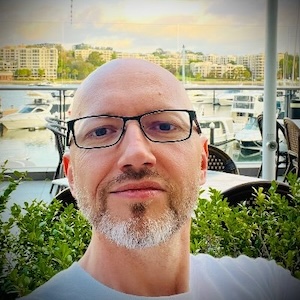Following my last post, part two of insights into ecommerce and retail. I’m taking a real interest in e-commerce in 2022 and thought to share other insights I’ve found and the next steps once we know there is some uncertainty and new drivers to leverage technology, this time which a merchant and retailer hat on.

Why
If you missed Commerce 2022 - E-commerce and the new normal - Part one, please go take look at that article, which looked at insights from news coverage, OECD, NN Group and Deloitte.
So, what are others saying?
EY
In the EY Future Consumer Index
Insights from the Future Consumer Index report
- Retailers and CPG (Consumer Packaged goods) brands will need to scenario plan the various possibilities for consumer demand in the short term, and think about how to keep supply chain, staff and inventory moving as well
- Companies will need to be much more intentional about how they look at their consumer holistically — the consumer in their context
- Retailers and CPG brands must consider their pricing strategy, optimized product mix and balance consumers’ price needs with their expectations for service and convenience - “I want it now” balanced against the ability to do so, and the mix of how products are made available and through which channel
- Consumers are becoming more aware and purpose-oriented, and the companies that follow suit will be positioned best for continued growth.
McKinsey
In Forecasting the future of stores, McKinsey highlights how consumer behaviours and expectations will change how retailers need to respond. I’ll leave you to read the insights in full. What I will include here is the following
McKinsey insights refer to 5 zeros of significance
- zero difference in channels - how would you allow consumers to come in store, take a look at the product and buy it online, or buy it online and check it out then collect it instore? How to return?
- zero desire for assistance - just let consumers get on with it, or get assistance easily (digital or with an associate in store / online if they require)
- zero wait time - buy now and get it in the hour? Fulfillment is key
- zero tolerance for inacton on equity and sustainability - consumers want to see how you include those in your values, your purpose and products
- zero wiggle room on talent - improve the employee experience and develop them.
There is plenty to unpack there, how will retailers respond? How about other businesses?
This also brings us back to the question around sourcing, supply chain and fulfillment. In the insights McKinsey Key principles of omnichannel distribution, they state that retailers and merchants will have to be strategic about their fulfilment options and approach, flexibility and contribution to positive consumer experience. A new way of thinking for supply chain.
Take a look at the image, as the fulfilment option and the various aspects such as lead time, delivery time, capacity constraints and customer expectations are balanced against other concerns.
From that point of view McKinsey report on how to master the omnichannel supply chain, the key messages are
omnichannel shopping has become the new normal for almost all consumer products and is likely to remain so for the foreseeable future.
E-commerce is booming, but physical stores remain important
Take a look at the seven building blocks of an effective omnichannel supply chain, notes the building blocks that must combine with digital transformation and innovation, with the customer at the centre.
They note that mastering omnichannel to become a best-in-class player is clearly a significant undertaking, and there is no one-size-fits-all approach to prioritizing. However, a “crawl, walk, run” approach can be an effective way to undertake, and then complete, the omnichannel journey.
Crawl involves getting the basic right,
- selecting the right approach and defining competitive e-commerce positioning,
- ensuring fulfillment can deliver to expectation,
- implementing tech (websites, online stores, inventory management, order management systems), and
- going into new channels and ensuring success as you enter those
The Walk and Run phases build upon those foundations and successes, and talk more about platforms, architecture (enterprise, technology and architecture) and of course the supply chain and fulfillment objectives that must be met. Are you in a position to ensure effective implementation, operation and governance as you do?
Next steps
We’ll continue with exploring the insights but move into the next step. I’m not going to dive into fulfillment but there may be option to explore. I’d prefer to think about some of the basics of crawling in the area of e-commerce - Lets think about ecommerce platforms.
The next step will be exploring ecommerce platforms. What are they, what do they offer and how do they enable you to architecting forward and transforming?
Of course as we look at the technologies, we need to think about the other aspects. People (the consumer / customer, the staff, the supply chain), the processes and the transformation that may be required. Perhaps you are already considering platforms such as online stores, booking and scheduling systems, website and content management systems, inventory tracking, marketing automation, the question is at what stage do you evaluate which, and how do you integrate, enable and move toward that goal of running, truly running?
Don’t forget about business models, strategy and a roadmap of effective architecture change.
Expect a follow up post over the next few days. Sign up for the newsletter if you have not, think more about architecture and how it can help or reach out if you have any thoughts on this piece.
